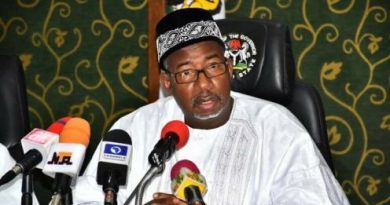Lily Gladstone on Why Native Representation in Hollywood Is a ‘Legacy of Survival’

Every year, ELLE brings together the best and brightest women in Hollywood for one special night to honor the impact they’ve made in the industry and the work that still needs to be done. Read 2023 Women in Hollywood honoree Lily Gladstone’s speech here.
Hello, my friends. My name’s Lily Gladstone, and I’m from the Blackfeet Nation.
And I was sitting there thinking about, what can I possibly say in this room of incredible women from every corner of the Earth? Yeah, all four directions are represented here tonight. That’s awesome.
And then my table, I’m going to just keep these women on stage with me. I have my two sisters, I have Jillian up here, because Native women do things in community. We do things with each other.
At my beautiful table, there’s also my other collaborators on Fancy Dance. I was sitting there kind of counting, and there are at least, you know, we walk through this world as individual women within our aim, within our purpose, we’re held up by community. And like the clip here, talking about the ancestors that we carry with us, all of the people we carry with us, at table eight, we’re actually kind of a sacred one. That’s cool. There are at least 13 different tribal nations represented in this room tonight.
Now, we know representation is tricky as women from many backgrounds. I never really fully know exactly what I’m going to say when I come into these moments, but I was definitely reminded tonight that, you know, Eva led the way by throwing some numbers out, which is important to do.
I ran into, on the way in, Stacy L. Smith, an associate professor of communication at USC Annenberg, who recently completed the “Lily Gladstone Effect” report, talking about the anomaly of the role of Mollie Burkhart being a leading role in this level of film. And these actresses becoming a part of that breakthrough. In this report, it examined Native representation across 1,600 top-grossing films from 2007 to 2022. The study evaluates every speaking or named character, more than 62,000, to understand how many Native American roles appeared on the screen. The author stipulated that Native characters must have U.S. origins to be included in the analysis. Additionally, the study assessed how often the Native actors worked across the sampled movies. Overall, less than one quarter of one percent, 0.25 percent, of all speaking roles went to Native American characters across the 16-year study. In fact, the percentage of Native American roles did not exceed one percent across any of the years evaluated, yet Natives are roughly 1.3 percent of the U.S. population, according to the census.
Think about what that population statistic was in 1491.
We come from communities where 95 percent of us, in some places at least, were wiped off of this Earth. So our representation in Hollywood is a legacy of survival. Our representation in the stories that we tell, it’s really how we’ve kept going. And a part of that is the stories that women carry forward, the way that we carry each other forward.
These two beautiful women on stage played sisters that Mollie Kyle lost. That’s something that Native women, statistically, we deal with more than any other people in this country, is missing and murdered Indigenous sisters. Missing and murdered Indigenous peoples.
That story being carried on this level is so important, and when we it tell ourselves—I’m pointing at the table with me tonight, Erica Tremblay, Miciana Alise, Isabel Deroy-Olson, my beautiful mother, Rachel—we all made another story about a missing sister and the sister who is seeking out the truth, who is often representative of the one who’s looking for a true story. Stories shape our society, they shape our community, they shape our survival. And the people who write that over and over and over again in these communities are Native women.
So, both of these stories are propping each other up, this incredibly strong circle, because we are stronger when we’re in a circle or in a community. We came from every corner of this continent—and Canada—to be here tonight. And we’re still here, we’re still going, and our stories continue as long as we’re here to speak them.
Thank you all so much, the women in this room, for never being silenced. I mean, some of you have really made me feel like there’s a space for me in this work and have kept me going for years and years and years. It’s just an honor to be here with all of you.


